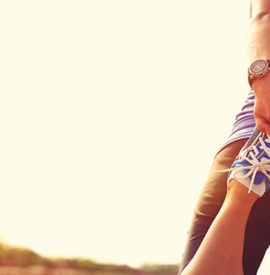Stay fit for everyday tasks with these five functional fitness exercises.
Exercises that train your muscles, joints and senses to work together as they do when you’re performing everyday tasks protect you against injury and promote physical longevity.
The benefits of exercise—even the most basic, like walking or doing sit-ups—are well documented, and they go far beyond improving your physical appearance. From boosting your cognitive function to preventing chronic diseases such as high blood pressure, movement is good, plain and simple. If you’re one of those people who thrives on it and hits the gym every day, you’re to be commended. But don’t pat yourself on the back too vigorously just yet. Despite your time commitment in the gym, you might be just as likely as your more sedentary neighbors to tweak your back lifting groceries out of the car or bending over to pick your kids’ toys up off the floor. Hopefully you haven’t learned this the hard way.
We asked a few local experts how to incorporate functional fitness into your exercise routine (if you have one) or just into your daily life to protect yourself from those pesky, around-the-home and-office tweaks and strains.
-
Sitting at a desk for eight hours a day
“Sitting for long periods weakens the muscles of your torso as you rely on the chair back to hold you up and as you continually hunch forward,” says Crissy Codi, a Denver-based yoga and fitness instructor with a master’s in sport and performance psychology. “It can also tighten and shorten the psoas and/or hamstring muscles, which can affect how your pelvis tilts and increase the load on your low back.” If you must sit for long periods, stand up every 15 or 20 minutes. Take a phone call while standing or walk to the water fountain. While sitting, sit tall with your shoulders back, spine erect, belly tight and a slight curve in your lower back.
“One way to avoid developing muscle imbalances is by sitting on a stability ball or ergonomic chair,” says Tyler Sonaty, a corrective-exercise and performance-enhancement specialist and certified kettlebell instructor with Denver Functional Fitness. “Strengthen your sit muscles with a kettlebell Russian twist.”
KETTLEBELL RUSSIAN TWIST

2. Keeping your back straight, grasp the kettlebell handle with both hands and bring it in front of your chest.
3. Lean back slightly, keeping your back straight, to engage your core muscles. Then lift your feet a few inches off the ground but keep your knees together and bent.
4. Maintaining your balance, twist from side to side, keeping the kettlebell in front of your chest. Do two to three sets of 10 to 20 reps.
2. Carrying groceries
One of the problems with lugging around groceries isn’t so much lifting the bags (useyour legs), but maneuvering in between shopping carts, parked cars, and up anddown the stairs to your apartment or house, says Steve Allen, personal training manager at Denver Gym and Fitness. “Your balance is constantly being thrown off kilter. Maintain it by keeping your center of gravity where it should be—centered. Work on that with suitcase lunges.
SUITCASE LUNGES
1. Grab one medium- to heavyweight dumbbell; hold it by your right side with your right hand as you would a 
2. Step forward with your right leg, and lower yourself straight down until your right knee reaches 90 degrees.
3. Return to standing, keeping your shoulders level and your back fully erect and straight as you move through the range of motion. Do three sets of 10 reps on each side. Tip: You may need a mirror, or a particularly critical friend to help you do this correctly.
4. Once you’ve mastered this on solid ground, add an additional challenge by incorporating an unstable surface. Balancing on one or a pair of Bosus or DynaDiscs while you perform this drill mimics the changing surfaces you’re likely to navigate as you move through the real world and forces your stabilizing muscles—the small ones around your spine, hips and ribs—to engage.
3. Digging in the yard, shoveling snow
Whether you’re cleaning up the garden in springtime or shoveling winter snow, taking care of your property is a year-round gig. According to a 2011 article published in TheAmerican Journal of Emergency Medicine, 11,500 Americans seek medical care for snow-shoveling injuries every year. More than a third are low-back injuries and half are attributed to muscular and skeletal strains.
“Back injuries are often the result of a weak core and back,” says RJ Smith, co-owner of and trainer at CrossFit DeCo gym in Denver. “Bending over at the waist, adding weight to the shovel and trying to pick it up without stabilizing your core will probably lead to tweaking or straining your back.”
Codi agrees. “Shoveling is tremendous exercise. To replicate it in the gym, try this dynamic squat with overhead reach and twist.”
DYNAMIC SQUAT

2. Keeping your spine as long and tall as possible, squat down until your elbows touch your thighs. Press through your feet, and use your legs to stand up tall as you turn your torso slightly to the right and lift your left heel, pivoting slightly on the ball of your foot.
3. Alternate sides as you continue.
4. Start with a small twist and no weight and gradually add a larger range of motion and more weight with a medicine ball or a kettlebell.
5. If you feel comfortable you can extend your arms overhead as you stand up, drawing them back to center as you return to your squat.
4. Lifting and holding your infant or toddler
This is very similar to carrying groceries, say Smith and Allen, but now you have a live moving object that can be shifty and unpredictable, so you have to be ready to react quickly. That means you need power and quickness, two things you improve with a classic clean-and-jerk. But, instead of doing it with a single barbell, try it with a dumbbell instead to work the sides of your body independently.
CLASSIC CLEAN-AND-JERK
1. Stand with your feet shoulder-width apart, and place a medium-weight dumbbell on the ground between your feet.
2. Keeping your back straight and your chest up, squat down and grab the dumbbell with one hand.
3. Quickly stand up out of the squat with enough momentum to bring the weight in front of your shoulder, palm facing out, but be careful not to push your hips forward or arch your back as you do so.
4. Bend your knees slightly, and then pop up and straighten them as you push the dumbbell straight up over your shoulder.
5. Reverse the steps, first lowering the weight to shoulder level and then down to the ground, keeping your back straight and chest up. That’s one repetition. Do three sets of eight reps with each arm.
5. Changing lightbulbs/Dusting high places/Placing dishes in cabinets
If you’ve had basic weight-training education, you know that you’re supposed to work opposing muscle groups: chest/back, biceps/triceps, quads/hamstrings. But what about your shoulders? They don’t have an obvious opposing muscle group and, therefore, often get left out of upper-body strength routines and forgotten, at least until you strain one reaching overhead for something.
Allen recommends thinking of your shoulders, which move in so many different planes, as their own opposing muscles and working them in three dimensions. That means avoiding machines that only travel in one or two planes of motion, and instead using cable systems, dumbbells or body-weight exercises such as the Y dumbbell shoulder press, that use a more true-to-life motion to stabilize your shoulder muscles.
Y DUMBBELL SHOULDER PRESS
1. Stand with your feet hip-width apart and a slight bend in your knees. Hold a medium-weight dumbbell in each hand near your shoulders.
2. Leading with your fists, push the dumbbells up and out, as if making a “Y” shape with your body.
3. Return them to the starting position, with your elbows all the way down by your sides and the dumbbells by your shoulders. Slowly do three sets of eight reps.
For more ideas on ways to get moving, read this post: Combat ready.












Comments